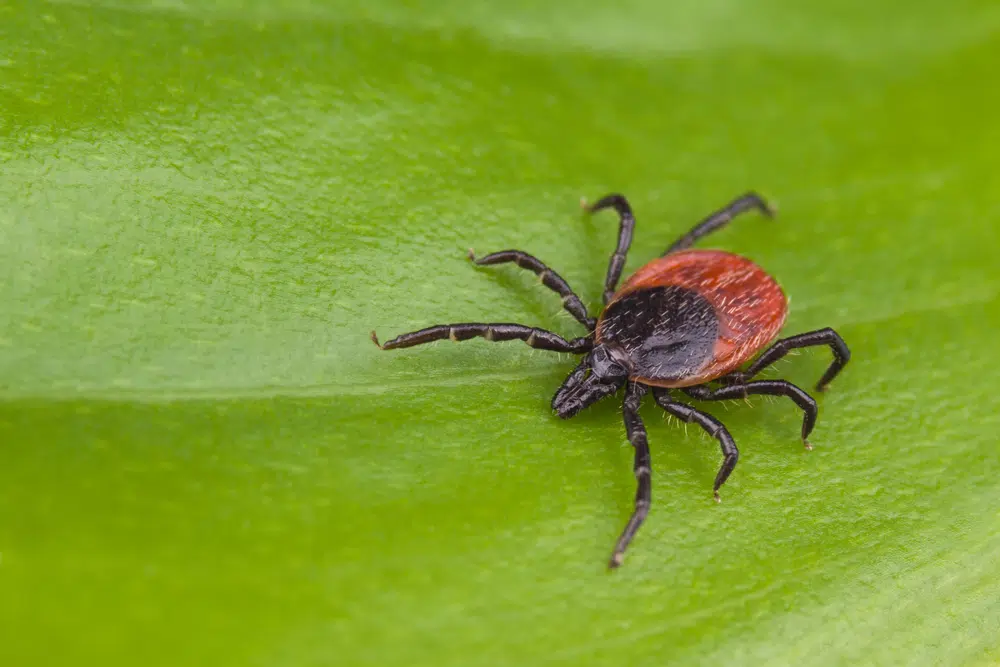
As spring arrives, many other seasons begin: camping, hiking, and picnicking.
Unfortunately, tick season is also underway in the Northeast, and with it, the potential to contract Lyme disease.
At ClearChoiceMD, we offer Lyme disease testing and treatment options, as well as expert tips on preventing tick bites.
What to Do If You Are Bitten
If you find a tick attached to yourself or a family member, remove it immediately. Use tweezers to grasp the tick and pull it loose from the skin. Avoid twisting the tick, as this can result in part of the tick remaining attached. Dispose of the tick carefully.
Monitor yourself or your family member for signs or symptoms of Lyme disease for 30 days after the bite. If you notice a rash, headache, joint pain, swelling, muscle pain, fever, or fatigue, visit your local ClearChoiceMD Urgent Care Center to be tested.
How Do I Get Tested for Lyme Disease?
At ClearChoiceMD, we offer comprehensive Lyme disease care, including tick removal, Lyme disease testing, and treatment. It is important to be tested for Lyme disease if you have been bitten by a tick and experience symptoms. Sometimes, a tick may be missed. Consider being tested if you think you may have been exposed to ticks and develop symptoms.
If you test positive for Lyme disease, it is essential to undergo treatment as quickly as possible. Early treatment is the most effective and can prevent the disease from progressing.
A Closer Look: What Is Lyme Disease?
Deer ticks, also called black-legged ticks, are the primary carriers and transmitters of Lyme disease. These small ticks, often the size of a sesame seed or smaller, have a dark red and black body and black legs. Lyme disease is typically caused by Borrelia burgdorferi, a bacteria carried by deer ticks.
If an infected tick bites a human, it may transmit the bacteria that causes Lyme disease. Ticks usually must be attached for at least 36 hours to transmit the bacteria. Removing ticks promptly can reduce your chances of contracting Lyme disease.
Early signs and symptoms of Lyme disease can include chills, headache, fever, swollen lymph nodes, and joint or muscle aches. These can occur three to 30 days after being bitten by an infected tick. A red, circular rash called erythema migrans may occur in up to 80 percent of infected people. This rash is often called a “bullseye rash,” as it can develop the appearance of a target. You may have Lyme disease even without this characteristic rash, as it does not occur in everyone and may vary in appearance.
Later signs and symptoms occur days to months after a bite from an infected tick and may include neck stiffness, headaches, facial palsy (drooping of part of the face), painful and swollen joints or muscles, irregular heartbeat, nerve pain, dizziness, shortness of breath, and numb or tingling feet or hands.
The Centers for Disease Control and Prevention (CDC) estimates that approximately 476,000 people across the U.S. contract Lyme disease each year. If not detected and treated, Lyme disease can have serious and sometimes permanent or fatal effects. Preventing exposure to deer ticks is one way to reduce your likelihood of contracting the disease.
Preventing Tick Bites
The Northeast has a particularly high concentration of deer ticks, which are active from spring through fall each year.
Here are some steps you can take to prevent tick bites:
- Avoid areas where ticks live: grassy fields, brushy areas, or woods.
- If you are in these areas, wear socks, long pants, and long-sleeved shirts to avoid skin exposure. Tucking your pants into your socks may be helpful. Staying on trails is recommended.
- The CDC recommends using insect repellant containing DEET, oil of lemon eucalyptus (OLE), picaridin, para-menthane-diol (PMD), 2-undecanone, or IR3535 to repel deer ticks. Clothing and boots can be treated with a solution containing 0.5% permethrin.
- After being outside, examine yourself and your clothing for ticks. Deer ticks can carry and transmit Lyme disease even in the nymph stage, and these tiny ticks can be more challenging to detect. Common sites to find ticks include under the arms, around the waist, behind the knees, and in the ears or hair. Using a mirror is often helpful.
- Help your children to check themselves for ticks. Pets should also be carefully examined, as ticks can hide beneath their fur.
- Shower within two hours of being outdoors. This can reduce your risk of contracting Lyme disease.
- Running your clothes through a dryer for 10 minutes on high heat should kill any ticks on dry clothing. Up to an hour is recommended for wet clothing.
If you or your family have been bitten by a deer tick and have symptoms, visit ClearChoiceMD Urgent Care for Lyme disease testing. Call us at (617) 804-6293 with any questions.


















